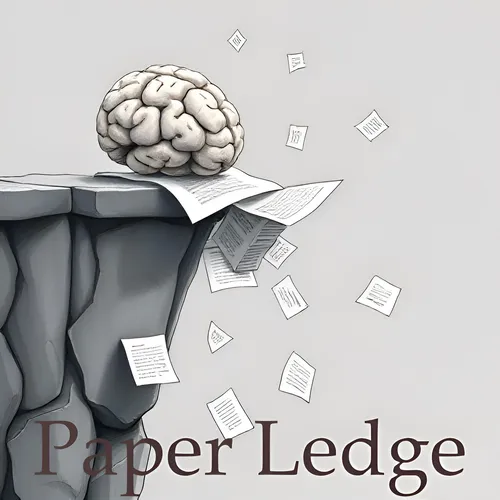Machine Learning - Beyond Binary Rewards Training LMs to Reason About Their Uncertainty
- Author
- ernestasposkus
- Published
- Wed 23 Jul 2025
- Episode Link
- https://www.paperledge.com/e/machine-learning-beyond-binary-rewards-training-lms-to-reason-about-their-uncertainty/
Hey PaperLedge crew, Ernis here! Get ready to dive into some seriously cool research that tackles a problem plaguing AI – hallucinations! You know, when a language model confidently spouts something that's just plain wrong.
We're looking at a paper that’s basically trying to teach AI to be not just smart, but also honest about how sure it is of its answers. Think of it like this: imagine asking your friend for directions. You'd prefer someone who says "I'm pretty sure it's this way..." over someone who confidently points you off a cliff!
Now, the way AI usually learns to "reason" is through something called Reinforcement Learning (RL). It's like training a dog – give it a treat (reward) when it does something right. In the AI world, the "treat" is often a simple "yes, you got it right!" or "no, try again."
But here's the catch: this simple reward system doesn't penalize guessing. So, the AI might learn to just throw out answers until it gets lucky, even if it has no real clue. This leads to those confident but completely wrong answers – the hallucinations!
This paper introduces a new approach called RLCR (Reinforcement Learning with Calibration Rewards). The core idea is to give the AI a more nuanced reward. Instead of just saying "right" or "wrong," RLCR also considers how confident the AI is in its answer. It uses something called a Brier score, which is like a penalty for being overly confident when wrong, or not confident enough when right. In other words, it rewards the AI for being well-calibrated.
Think of it like a weather forecast. A well-calibrated forecast doesn't just predict rain; it says "there's an 80% chance of rain," and it's right about 80% of the time when it makes that prediction. RLCR aims to make AI forecasts just as reliable.
The researchers actually proved mathematically that this approach should work, which is pretty cool. But even better, they tested it out on a bunch of different datasets. The results were impressive! RLCR improved the AI's calibration – meaning it became much better at knowing when it was likely to be right or wrong – without sacrificing accuracy.
In fact, it even outperformed other methods that tried to fix the calibration problem after the AI was already trained. It's like fixing a wobbly table by building it right in the first place!
And get this: they found that you could actually use the AI's confidence level to improve its accuracy even further. By giving more weight to answers the AI was really confident about, they could filter out some of the noise and get even better results.
"While ordinary RL hurts calibration, RLCR improves it."
So, why does this matter? Well, imagine using AI in critical applications like medical diagnosis or financial forecasting. You wouldn't want an AI that's confidently wrong! RLCR helps us build more reliable AI systems that we can trust, even when dealing with complex problems.
- For researchers: This provides a new direction for training reasoning models, emphasizing the importance of calibration.
- For developers: This offers a practical technique for improving the reliability of AI applications.
- For everyone: It brings us closer to a future where AI is a trustworthy partner, not just a source of potentially misleading information.
Here are a couple of things I'm wondering about:
- How does the complexity of the task affect the benefits of RLCR? Does it work equally well on simple and really complex problems?
- Could this approach be combined with other techniques to further improve both accuracy and calibration?
This paper is a big step forward in making AI more reliable and trustworthy. It shows that by explicitly optimizing for calibration, we can build reasoning models that are not only smart but also honest about their limitations.
Credit to Paper authors: Mehul Damani, Isha Puri, Stewart Slocum, Idan Shenfeld, Leshem Choshen, Yoon Kim, Jacob Andreas
